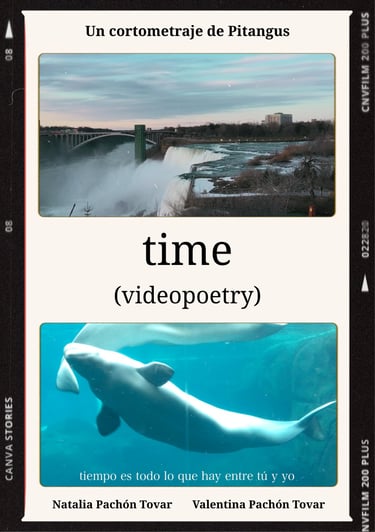Art as a Catalyst for Grief
ARTS & CULTURE
Written by: Valentina Pachón - PITANGUS Creative Director
10/28/20257 min read


Art as a Catalyst for Grief
The experience of grief is one of the most intimate and universal constants of human existence. Faced with loss, whether of a loved one, a part of oneself, or a phase of life, the individual confronts a monumental emotional task: processing the pain and reintegrating into life.
Throughout this process, art has historically served not only as a mirror of sorrow but as a powerful catalyst, transforming internal suffering into a tangible work. By providing a language and a space for the inexpressible, various artistic disciplines have allowed creators to navigate their mourning, offering the public tools to understand and validate their own pain.
In this article, I have compiled several examples of works from fields such as cinema, painting, visual arts, music, and literature, in which artists have given free rein to their experience of grief through their own art. This compilation can be both a new discovery for those interested in art and a way to understand how others have faced a situation that some readers may have already encountered.
The Transformation of Suffering
1. Anticipatory Grief and the Final Act of Love
Field: Cinema (Drama)
Artist: Michael Haneke (n. 1942)
Nationality: Austria
Work: Amour (2012).
In Amour (Haneke, 2012), grief permeates the characters even before the definitive event: death. It is an anticipatory grief, a torturous process in which the viewer intimately experiences the loss through the character of Georges, who observes the deterioration of his wife Anne after a stroke.
The film transforms death into a prolonged process, where the act of love becomes the acceptance of the loved one's passing as part of a dignified death. Haneke, through his austere and uncompromising gaze, catalyzes the viewer's reflection on the end of life and sacrifice without sentimentalism.
2. Self-Portrait and the Awareness of Death
Field: Painting (Self-portrait and Expressionism)
Artist: Frida Kahlo (1907-1954)
Nationality: Mexico
Works: La Columna Rota (1944) & Henry Ford Hospital (1932).
Frida Kahlo’s life was marked by chronic physical pain following a severe accident and by multiple emotional losses, including miscarriages and a turbulent relationship with painter and muralist Diego Rivera. Her work stands as a testimony to this continual mourning.
In La columna rota (The Broken Spine), Kahlo portrays her own torn and fractured body, replacing her spine with a cracked Ionic column — a symbol of how she perceived her physical and mental state.
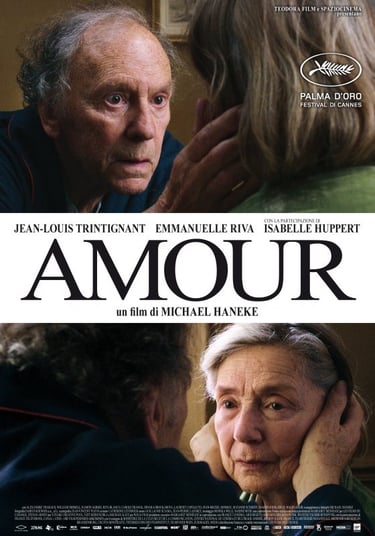

Movie Poster “Amour” (2012). Image used for analysis and cultural reference purposes.
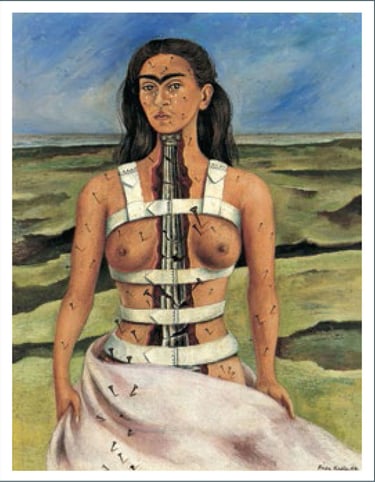

Similarly, in Henry Ford Hospital, she confronts the emotional devastation of a miscarriage by depicting herself bleeding in a hospital bed, connected to symbols of loss. Kahlo used self-portraits as a form of shock therapy, taking her pain out of the darkness of her internal struggle and turning it into an external visual artifact.
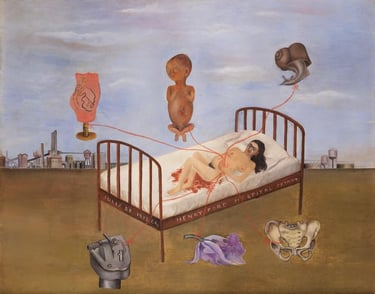

This commitment to poetic and experimental audiovisual language is evident in our works on dealing with loss. Our first work in this field is the videopoem Time, written by JerseyAmarillo. We applied our aesthetic by transforming it into a videopoem that confronts the fragility of time and translates the existential anguish of loss.
Our second work in this line is the short film Immobile, a piece that combines still-image film and stop motion to tell the story of Francisca, a woman from Bogotá, Colombia who faces the devastating loss of her identity.
Inspired by the grief we experienced following the death of our mother, this short film reflects the core vision of PITANGUS: using visual narrative and animation techniques to transform feeling into a shared creative experience.
Photo: Natalia Pachón. Painting: Dødsdans (Dance of Death) Edvard Munch (1915–16), Musée d’Orsay, París. Oct, 2022.
Edvard Munch's childhood was defined by illness and loss: his mother and older sister, Sophie, died of tuberculosis. These deaths generated a deep and perpetual mourning that became the central theme of his "Frieze of Life."
3. The Externalization of Family Agony
Campo del arte: Painting (Symbolic Expressionism)
Artista: Edvard Munch (1863-1944)
Nationality: Norway
Work: Death in the Sickroom (1893)
La columna rota — Frida Kahlo (1944)
Death in the Sickroom— Edvard Munch (1932)
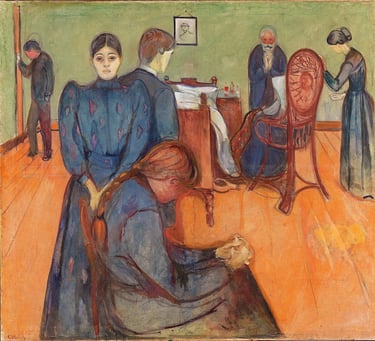

In the work Death in the Sickroom, Munch does not focus on the figure of the dying woman (based on Sophie) but on the faces of the relatives surrounding her. Unlike traditional representations of death, here sorrow is not a contained emotion but a paralyzing, silent terror. The characters are rigidly separated and look in different directions, illustrating the solitude and isolation that accompany grief.
Munch used painting and, later, photography (where he experimented with ghostly figures to represent the dead), as a means to exorcise sorrow and capture the emotional atmosphere of agony and anxiety. His art does not seek to resolve grief but eternalizes it and subjects it to analysis, allowing a constant dialogue with absence.
4. The Grief of Collective Memory
Field: Visual Arts (Drawing and Experimental Animation)
Artista: William Kentridge (n. 1955)
Works: Felix in Exile (1994) y la serie Drawings for Projection.
William Kentridge's work focuses on the complex and painful history of South Africa during and after apartheid. His work Felix in Exile uses a raw and repetitive animation technique (drawing, erasing, and redrawing on the same paper) that reflects the process of creating and destroying memory.
The piece addresses a grief that is collective and historical in nature: the loss of truth, the forced disappearance of individuals, and the scarring of a social and physical landscape. Characters and settings are ephemeral, and the act of erasure becomes a metaphor for history’s attempt to conceal violence.
Kentridge uses charcoal and chalk not to create beauty, but to leave a trace of the fragility of remembrance. His animations compel the viewer to confront the nation’s losses, transforming historical silence into a meditation on repair and the endurance of memory.
Henry Ford Hospital (La cama volando) — Frida Kahlo (1932)

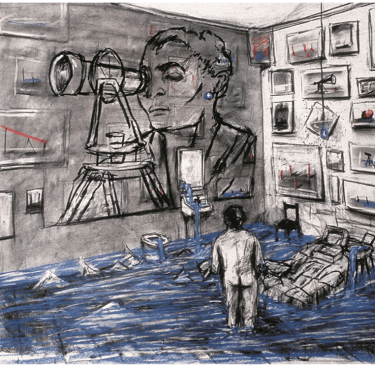
Felix in Exile— William Kentridge (1994)

5. Filial Grief and Reconciliation

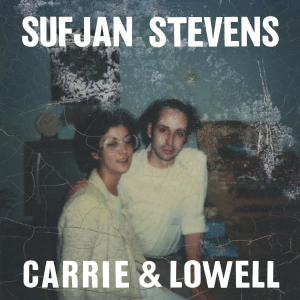
The album is essentially a musical memoir, navigating pain, guilt, the memory of a fragmented childhood, and the difficulty of posthumous reconciliation.
Stevens uses a minimalist acoustic folk style, where his voice and lyrics create an atmosphere of extreme fragility. Through lyrics that quote memories, the artist transforms a complex grief, marked by ambivalence, into an attempt to honor and forgive the maternal figure.
Field: Music (Acoustic Folk)
Artist: Sufjan Stevens (n. 1975)
Work: Carrie & Lowell Album (2015).
Sufjan Stevens’ Carrie & Lowell is a stripped-down, deeply introspective meditation on the death of his biological mother, Carrie, who abandoned him in childhood due to mental illness and addiction.
Album Cover Carrie & Lowell
6. Narrating What Cannot Be Named
Field: Literature (Narrative)
Writer: Piedad Bonnett (n. 1951)
Work: What Has No Name (2013)
In her testimonial work What Has No Name, the poet Piedad Bonnett confronts the void left by her son's suicide. This work becomes a literary approach to giving language and form to the pain that, by its very nature, resists being verbalized.
Bonnett uses writing as an exercise in catharsis, an active process of "giving a name" to the unnameable. By unadornedly recounting her son's mental illness and fatal outcome, the author not only processes her own sorrow but opens a space for empathy and public dialogue about grief, mental health, and social stigma.
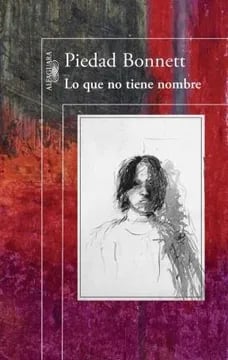

Book Cover
The Shadow of Creation
As seen through Munch’s painting, Stevens’ music, and Bonnett’s memory, grief is a non-linear process.
Its stages dissolve and intermingle, acting like a wave that retreats to the deepest part of the mind and, unexpectedly, returns forcefully and violently to the surface, bringing with it a collection of memories, feelings, and thoughts that were considered forgotten.
For us at PITANGUS — particularly through writing and audiovisual creation — art has allowed us to express, navigate, and question grief from multiple perspectives and stages of life.
In the end, one question remains: will there ever be a moment when creation can emerge from somewhere distant from grief, or will it stay as a continuous companion to artists who have lived through it?
How can we tell a different story if that is precisely what comes from our core? How can we create something new if grief, or its emotional aftermath, constantly presents itself as a shadow that refuses to disappear completely? To what extent do we feel it is too much or too repetitive to explore this subject? How can we create something new from an experience that is not so painful?
Although we are still searching for answers to these questions in our creative endeavor, the only certainty we have is that grief will be that constant companion on our journey, and depending on the work, it may be the protagonist or merely a subtle, almost imperceptible whisper.
7. From the Creative Studio: Grief in Audiovisual Narratives
Field: Film and Videopoetry
Artist: PITANGUS Creative Studio
Obras: Time (2022) & Immobile (2024)
At PITANGUS Creative Studio, our exploration of grief is visceral and deeply personal. Our creation is guided by an aesthetic and ethical manifesto that seeks emotional resonance accompanied by a subtle sense of discomfort.
This approach aligns perfectly with the notion of catalyzing grief, as many of our works juxtapose elements of naïve art with narratives that are harsh and painful. This contrast is our way of speaking about what hurts without renouncing to beauty.
